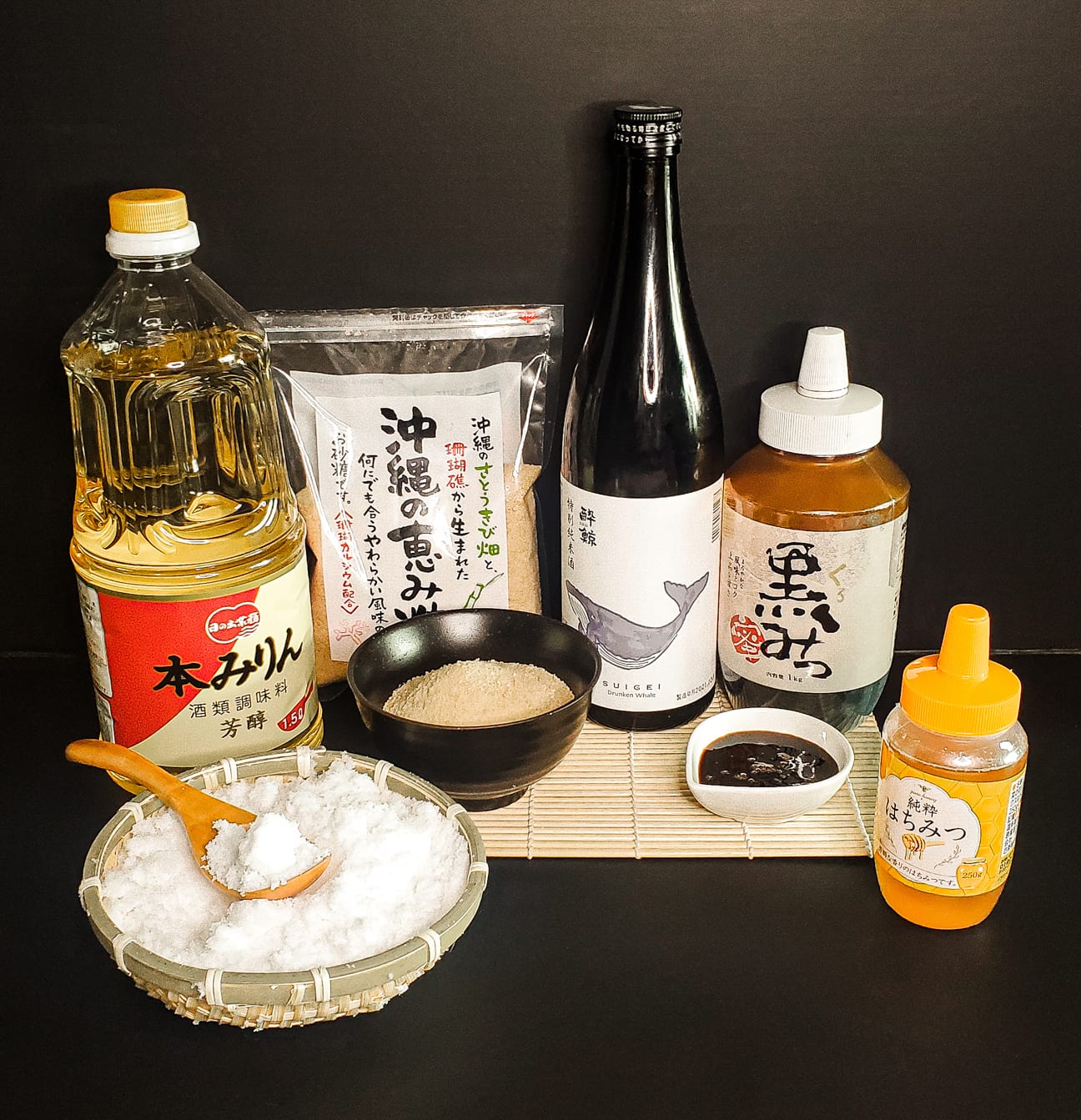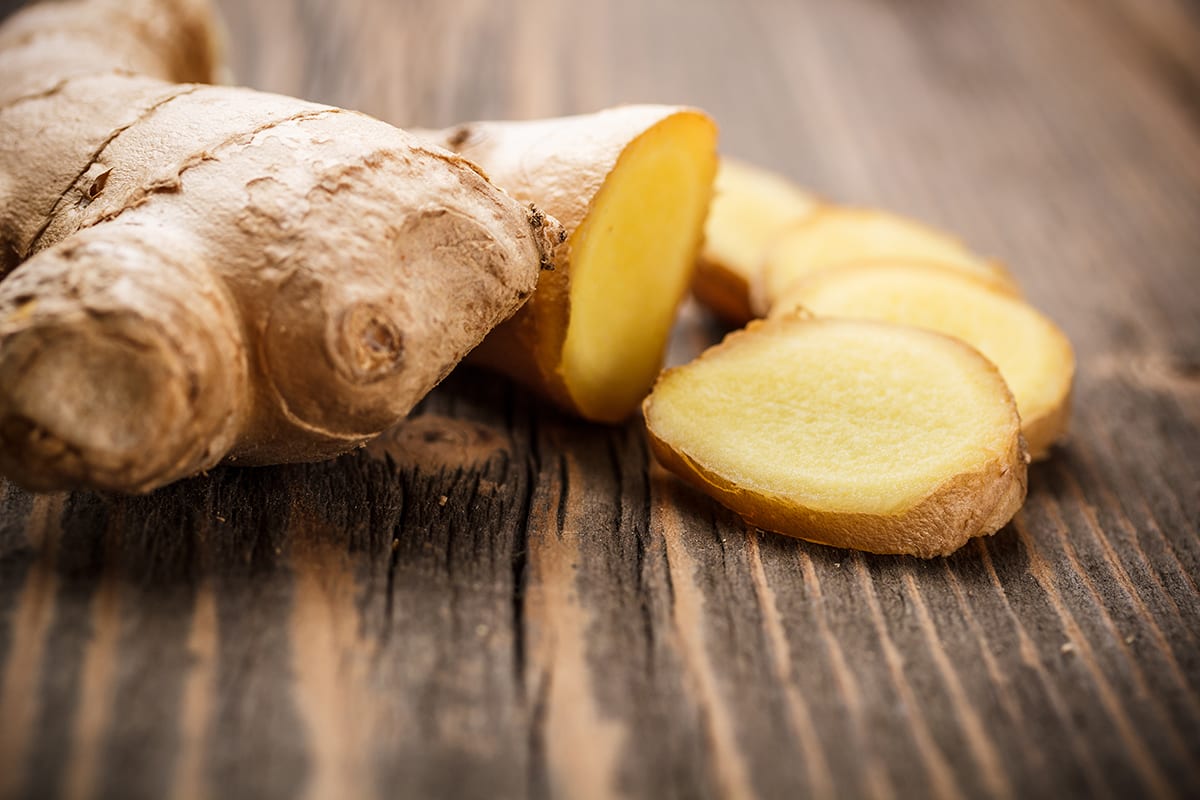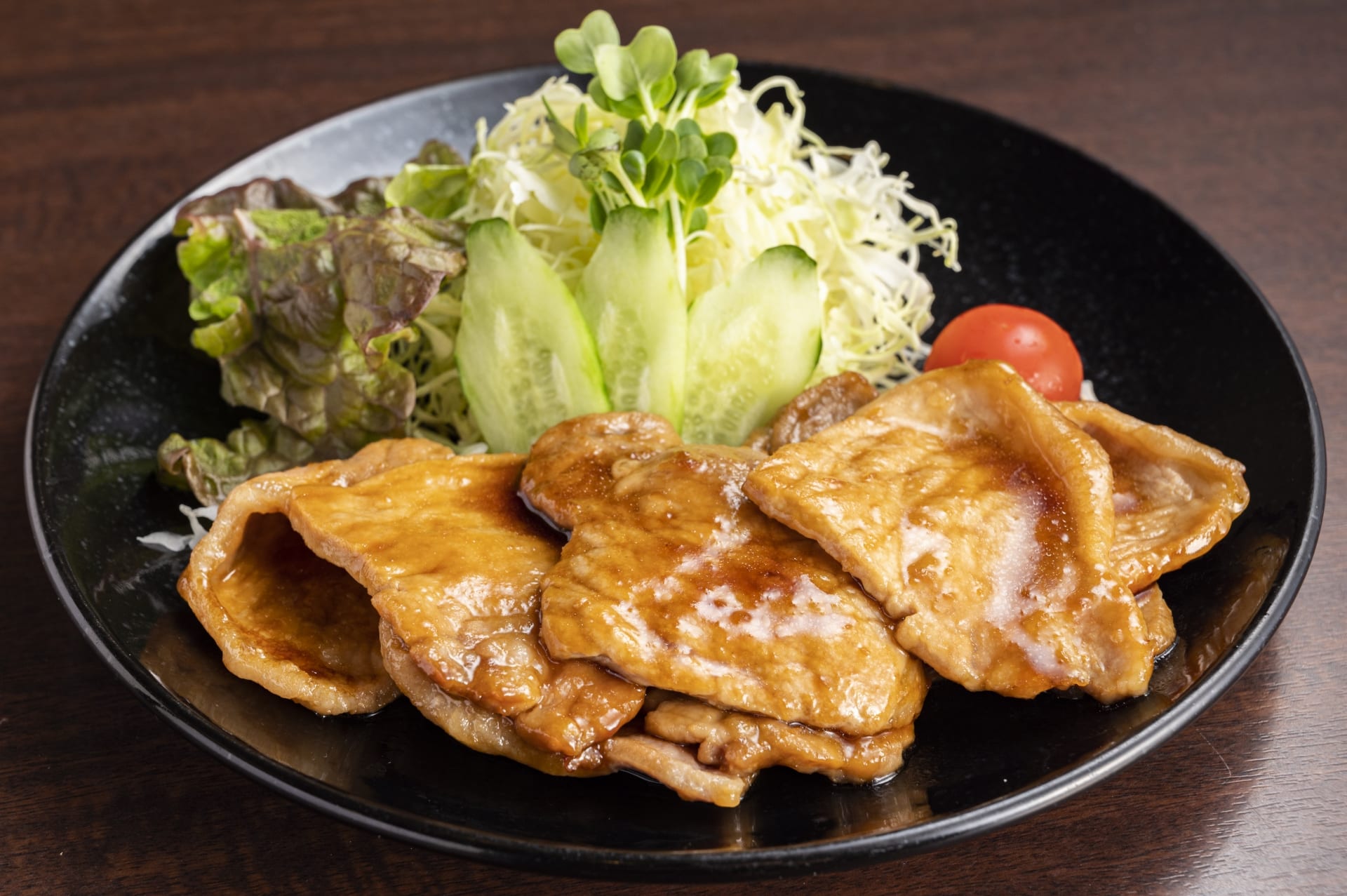No products in the cart.
February 27
甘味 (かんみ) : Kanmi / Sweet
0 comments
Each article augments Japanese words throughout its text. The vocabulary throughout the text is related to cooking, food, and flavor. Below each block of text will be a drop down menu that contains the meaning and reading of each word, Like this:
和食(わしょく) is a cuisine loved by people all over the world. Yet, most people don't know how to cook 和食 because they don't understand the 食材料(しょくざいりょう)in Japanese recipes.
和食(わしょく)
"Wa-shoku" – Japanese cuisine
和:わ:Japanese style; harmony
食:しょく:eat; food
食材料(しょくざいりょう)
"shokuzai-ryō"– ingredients
食:しょく:food; eat
材:ざい:lumber
料:りょう:materials
This dropdown menu can be used in your preferred study method. We recommend that you attempt to read through each section first without revealing the word meanings, and make educated guesses based on context clues. Then, reveal the word meanings and read the section once more using the drop list for reference.
This is of course completely up to you, as you might prefer to read each drop list first, before reading each section. There are no right or wrong ways to use this tool, although we DO suggest that you use some form of memorization. So try to keep the words hidden for as long as possible, or go off of memory or context for as long as you can, and don't be afraid to read a section more than once!

If you've ever had the good fortune to try 豚肉のしょうが焼き(ぶたにくのしょうがやき), then you probably know first hand how indispensable sweetness is to 和食(わしょく). 豚肉のしょうが焼き is a quintessential comfort food found on the menu of any 定食屋(ていしょくや) worth its salt and sugar. One mouthful of this classic stir fry fills your palate with the rich combination of tender pork, bathed in a tangy glaze, accentuated by the aromatic しょうが(生姜)expertly cooked into the dish.

Upon first bite, the しょうが cuts through all the other flavors, boldly establishing itself as the dominant presence in the marinade. As we discussed in the previous post, 塩(しお)intensifies the flavor of the しょうが, as well as the 豚肉 it's slathered on. Pretty intense, right? You might even think that sounds too intense. And you'd be right – if it weren't for the gentle 甘味(かんみ) to complement this flavor bomb and soften its impact.
豚肉のしょうが焼き(ぶたにくのしょうがやき)
"buta-niku no shōgayaki" – stir-fried pork in ginger
豚肉(ぶたにく)
"buta niku" – pork
豚:ぶた:pork; pig
肉:にく:meat; flesh
しょうが(生姜)
"shōga" – ginger
しょう:生:raw; life
が:姜:ginger
焼き(やき)
"yaki" – grill (noun form)
焼・き:や・き
定食屋(ていしょくや)
定:てい:planned; determined
食:しょく:meal; food
屋:や:shop; seller; dealer
和食(わしょく)
"washoku" – Japanese cuisine
和:わ:Japanese style; harmony
食:しょく:eat; food
塩(しお)
"shio" – salt
甘味(かんみ)
*see Feature Flavor section

You'll notice that a common theme of 味付け(あじつけ)in 料理(りょうり)is that flavor profiles work together as a team to complement and balance each other out. 甘味 in 和食 takes a myriad of different forms, just like all of the other flavor profiles. Each distinct 調味料(ちょうみりょう)characterized by an 甘い(あまい) profile has a unique affect on the 食材料(しょくざいりょう)it interacts with.
For example, 砂糖(さとう)dissolves easily into liquids and oils and is generally the most 優しい(やさしい)of all forms that 甘味 takes. It doesn't have its own flavor, but rather makes other 食材料 it mixes with sweet without adding it's own 香り(かおり). On the other hand, 酒(さけ)lends its own unique 味(あじ) to a dish, and also serves to tenderize meat, and lock flavor in place. It also helps mask the strong, fishy odors of 海鮮(かいせん)which might otherwise overpower other ingredients.

みりん(味醂)is made through a different process than 酒 which makes it much milder. It's used to add just a touch of 甘さ(あまさ)to a dish, and to magnify its 旨味(うまみ). It can be used to add a tinge of 甘味 without making the 糖分(とうぶん)too high.
味付け(あじつけ)
"aji-tsuke" – flavor development
味:あじ:flavor; taste
付け:つけ:to add; to join; to fix
料理(りょうり)
"ryōri" – cooking
料:りょう:materials; fee
理:り:logic; reason; arrangement
調味料(ちょうみりょう)
"chō-mi-ryō" – condiments
調:ちょう:tune; tone; arrange
味:み:flavor; taste
料:りょう:materials; fee
甘い(あまい)
*see Feature Flavor section
食材料(しょくざいりょう)
"shokuzai-ryō"– ingredients
食:しょく:food; eat
材:ざい:lumber
料:りょう:materials
砂糖(さとう)
"satō" – sugar
砂:さ:sand
糖:とう:sugar
優しい(やさしい)
"yasashii" – gentle; kind
優し・い:やさし・い
香り(かおり)
"kaori" – aromatic; fragrance
酒(さけ)
"sake" – Japanese rice wine
味(あじ)
"aji" – flavor; taste
海鮮(かいせん)
"kaisen" – seafood
海:かい:ocean; sea
鮮:せん:fresh; vivid; clear; brilliant
みりん(味醂)*primarily written in kana
"mirin" – Japanese cooking wine
み:味:flavor; taste
りん:醂:bleach in water
旨味(うまみ)
"umami" – savory; savoriness
旨:うま:delicious; skilled
味:み:flavor; taste
糖分(とうぶん)
糖:とう:sugar
分:ぶん:portion
甘さ(あまさ)
*see Feature Flavor section
This brings up another recurring theme of 味付け: most 調味料 have more than one flavor profile which overlap. Much like how みそ(味噌)falls under both the 塩っぱい(しょっぱい) and the 旨い(うまい)classification, みりん falls under both the 甘い and the 旨い profiles.
Just like 塩, there's a plethora of 甘味 used in 和食, and it would go beyond the scope of this article to cover them all. For starters, we didn't even get to 蜂蜜(はちみつ)or 黒糖(こくとう)! In the mean time, we encourage you to dive into the glossary, familiarize yourself with all the terms used in this article, and then give it a read once again with more context. With all the work we put into it, we must insist it's pretty sweet!
みそ(味噌)*primarily written in kana
"miso" – fermented soybean paste
み:味:flavor; taste
そ:噌:robust
塩っぱい(しょっぱい)
"shoppai" – salty
旨い(うまい)
"umai" – savory (adjective form)
蜂蜜(はちみつ)
"hachimitsu" – honey
蜂:はち:bee; wasp; hornet
蜜:みつ:honey; nectar
黒糖(こくとう)
"kokutō" – unrefined brown sugar
黒:こく:black
糖:とう:sugar
The Kanji for "sweet" is 甘, read in its 訓読み(くんよみ) form as あま and its 音読み(おんよみ) form as かん. Here are its most common forms:
Let's say you're on a first date at a cafe. You order a particularly 甘い piece of strawberry shortcake. Staring suggestively into your date's eyes, you sensually slide a forkful of it into your mouth, and are immediately overcome by its delicate 甘さ. Wiping the cream from the corner of your mouth, you watch as your date takes a bite and frowns – the cake is just too rich! The cake's 甘味 is just right for you, but apparently a bit too much for some people. Too bad for your date, because strawberry shortcake is awesome.

In its transitive verb form, it becomes 甘える:
Essentially, it means to feign helplessness or innocence in a way that manipulates others into taking care of you. So calling back to the scenario above, you go to settle the bill, and realize that you forgot your wallet at home. These things happen, and lucky for you, you're not alone. So you do what you always do in this situation and 甘える to your date. You feign an expression of sheepish innocence, and promise to get the next one. Oh, how silly of you.
甘い:あま・い:naïve; overly optimistic; underprepared (adjective)
Alternatively, 甘い can mean naïve, overly confident, and even presumptuous. This usage of the word carries a negative connotation. So for example, to finish our chronicle about your dubious romantic escapade:
Your date, quite underwhelmed by the entire experience, roles their eyes and pays the cashier. Too bad there probably won't be a next time. That kind of thinking is quite 甘い, as was your whole performance today. At least the cake was good...

訓読み(くんよみ)
"kunyomi" – the native Japanese reading of a kanji
訓:くん:instruction; native Japanese reading
読・み:よ・み:reading
音読み(くんよみ)
"onyomi" – the Chinese-derived reading of a kanji
音:おん:sound
読・み:よ・み:reading
味(あじ)
"aji" – flavor; taste
塩味(えんみ)
"enmi" – salty
塩:えん:salt
味:み:flavor; taste
甘味(かんみ)
"kanmi" – sweet
甘:かん:sweet
味:み:flavor; taste
酸味(さんみ)
"sanmi" – sour
酸:さん:acid
味:み:flavor; taste
旨味(うまみ)
"umami" – savory
旨:うま:savory; skilled; great
味:み:flavor; taste
苦味(にがみ)
"nigami" – bitter
苦:にが:bitter
味:み:flavor; taste
香り(かおり)
"kaori" – aromatic; fragrance
料理(りょうり)
"ryōri" – cooking
料:りょう:materials; fee
理:り:logic; reason; arrangement
和食(わしょく)
"Washoku" – Japanese cuisine
和:わ:Japanese style; harmony
食:しょく:eat; food
味付け(あじつけ)
"aji-tsuke" – flavor development
味:あじ:flavor; taste
付け:つけ:to add; to join; to fix
調味料(ちょうみりょう)
"chō-mi-ryō" – condiments
調:ちょう:tune; tone; arrange
味:み:flavor; taste
料:りょう:materials; fee
量(りょう)
"ryō" – amount
濃・い(こ・い)
"koi" – strong; dark; potent
小皿(こざら)
"kozara" – small plate for dipping sauce
小:こ:small
皿:ざら:plate
焼き(やき)
"yaki" – grill (noun form)
焼・き:や・き
定食屋(ていしょくや)
定:てい:planned; determined
食:しょく:meal; food
屋:や:shop; seller; dealer
食材料(しょくざいりょう)
"shokuzai-ryō"– ingredients
食:しょく:food; eat
材:ざい:lumber
料:りょう:materials
食べ物(たべもの)
"tabemono" – food
食べ:たべ:food; eat
物:もの:thing; object
野菜(やさい)
"yasai" – vegetable
野:や:plains; field; rustic
菜:さい:vegetables; greens
果物(くだもの)
"kudamono" – fruit
果:くだ:fruit; reward
物:もの:thing; object
きゅうり *kanji very obscure and almost never used
"kyūri" – cucumber
動物(どうぶつ)
"dōbutsu" – animals
動:どう:move; motion
物:ぶつ:thing; object
肉(にく)
"niku" – meat; flesh
牛肉(ぎゅうにく)
"gyū niku" – beef
牛:ぎゅう:beef; cow
肉:にく:meat; flesh
鶏もも(とりもも)
"torimomo" – chicken thigh
鶏:とり:chicken
もも:thigh
玉子(たまご)
"tamago" – egg(s)
玉:たま:ball
子:ご:child; seed
卵焼き(たまごやき)
"tamago-yaki" – Japanese rolled omelette
卵:たまご:egg(s) *same meaning as 玉子, represented by one kanji
焼・き:や・き:to grill; to roast
刺身(さしみ)
"sashimi" – raw fish
刺:さ・し:pierce; stab
身:み:body
海鮮(かいせん)
"kaisen" – seafood
海:かい:ocean; sea
鮮:せん:fresh; vivid; clear; brilliant
ご飯(ごはん)
"gohan" – rice; meal
ご:御:honorific marker denoting something deserving of respect
飯:はん:meal; boiled rice
豚肉のしょうが焼き(ぶたにくのしょうがやき)
"buta-niku no shōgayaki" – stir-fried pork in ginger
豚肉(ぶたにく)
"buta niku" – pork
豚:ぶた:pork; pig
肉:にく:meat; flesh
しょうが(生姜)
"shōga" – ginger
しょう:生:raw; life
が:姜:ginger
海鮮(かいせん)
"kaisen" – seafood
海:かい:ocean; sea
鮮:せん:fresh; vivid; clear; brilliant
塩(しお)
"shio" – salt
塩っぱ・い:しょっぱ・い:salty (adjective)
塩っぱ・さ:しょっぱ・さ:saltiness (noun)
塩味:えん・み:subjective level of saltiness (noun)
塩分(えんぶん)
"enbun" – salt content; The amount of sodium in a food
塩:えん:salt
分:ぶん:portion
醤油(しょうゆ)
"shōyu" – soy sauce
醤:しょう:a kind of miso
油:ゆ:oil
みそ(味噌)*primarily written in kana
"miso" – fermented soybean paste
み:味:flavor; taste
そ:噌:robust
赤味噌(あかみそ)
"aka miso" – red miso paste
赤:あか:red
味:み:flavor; taste
噌:そ:robust
甘い:あま・い:sweet (adjective)
甘さ:あま・さ:sweetness (noun)
甘味:かん・み:subjective level of sweetness (noun)*
甘み:あま・み:same meaning as 甘味, used more in casual conversation
みりん(味醂)*primarily written in kana
"mirin" – Japanese cooking wine
み:味:flavor; taste
りん:醂:bleach in water
砂糖(さとう)
"satō" – sugar
砂:さ:sand
糖:とう:sugar
糖分(とうぶん)
糖:とう:sugar
分:ぶん:portion
酒(さけ)
"sake" – Japanese rice wine
砂糖(さとう)
"satō" – sugar
砂:さ:sand
糖:とう:sugar
優しい(やさしい)
"yasashii" – gentle; kind
優し・い:やさし・い
蜂蜜(はちみつ)
"hachimitsu" – honey
蜂:はち:bee; wasp; hornet
蜜:みつ:honey; nectar
黒糖(こくとう)
"kokutō" – unrefined brown sugar
黒:こく:black
糖:とう:sugar
腐ってる(くさってる)
"kusatteru" – rotting; rotten
腐る:くさる:to rot; to go bad; to decay; to spoil
酒(さけ)
"sake" – Japanese rice wine
酸っぱい(すっぱい)
"suppai" – sour
旨味(うまみ)
"umami" – savory; savoriness
旨:うま:delicious; skilled
味:み:flavor; taste
苦い(にがい)
"nigai" – bitter
注意(ちゅうい)
"chūi" – CAUTION
注:ちゅう:concentration; notes; to pour into
意:い:idea; mind; thought
危険(きけん)
"kiken" – danger; hazard
危:き:dangerous; fear
険:けん:steep place; sharp eyes; precipitous
毒性(どくせい)
"dokusei" – toxic; poisonous
毒:どく:poison; germ
性:せい:essential nature; gender
辛味(からみ)
"karami" – spiciness (subjective)
辛:から:spicy
味:み:flavor
バター(ばたー)
"batā" – ...butter
加塩バター(かえんばたー)
"ka-en batā" – salted butter
加:か:add; join; include
塩:えん:salt
胡麻油(ごまあぶら)
"goma-abura" – sesame oil
胡:ご:foreign; barbarian
麻:ま:hem; flax
油:あぶら:oil
炭水化物(たんすいかぶつ)
"tansui-kabutsu" – carbohydrates
炭:たん:charcoal
水:すい:water
化:か:change; take the form of
物:ぶつ:thing; object
蛋白質(たんぱくしつ)
"tanpaku-shitsu" – protein
蛋:たん:egg white
白:ぱく:white
質:しつ:substance; quality
脂肪質(しぼうしつ)
"shibō-shitsu" – fat
脂:し:fat; grease; lard
肪:ぼう:obese; fat
質:しつ:substance; quality
塩分(えんぶん)
"enbun" – sodium content
塩:えん:salt
分:ぶん:portion
糖分(とうぶん)
糖:とう:sugar
分:ぶん:portion
訓読み(くんよみ)
"kunyomi" – the native Japanese reading of a kanji
訓:くん:instruction; native Japanese reading
読・み:よ・み:reading
音読み(くんよみ)
"onyomi" – the Chinese-derived reading of a kanji
音:おん:sound
読・み:よ・み:reading
国(くに)
"kuni" – country
王(おう)
"ō" – king
総理大臣(そうりだいじん)
"sōridaijin" – prime minister
総:そう:whole; all; general
理:り:logic; reason; arrangement
大:だい:big; large
臣:じん:retainer; minister; subject
If want to bring your 味付け skills to life, click and and read all about the vibrant (酸味) and how it unifies all flavors!
Did you like this article? Please share it around!
Tags
food
Never miss a post – let us slide into your inbox with hot articles.
Session expired
Please log in again. The login page will open in a new tab. After logging in you can close it and return to this page.